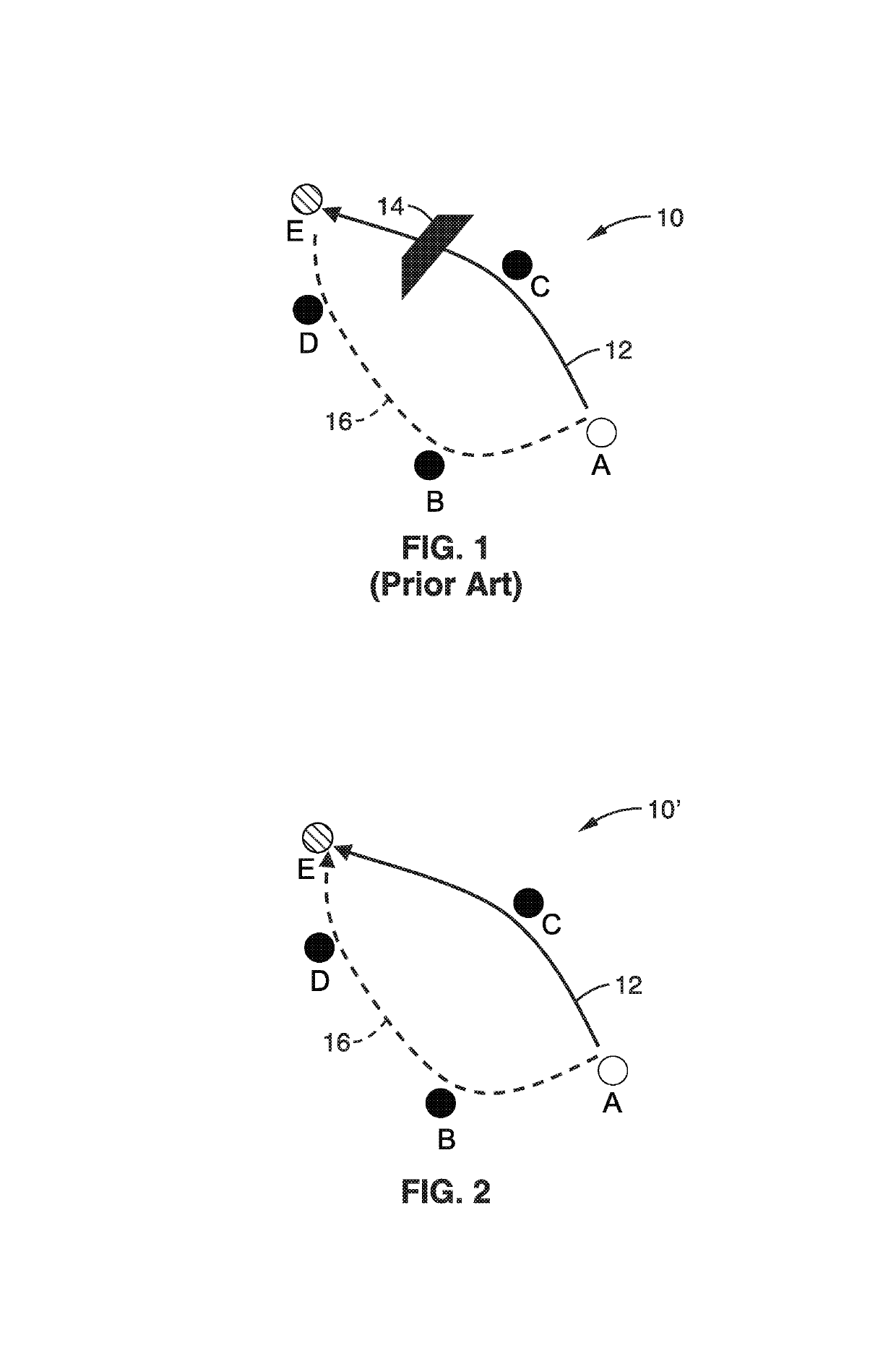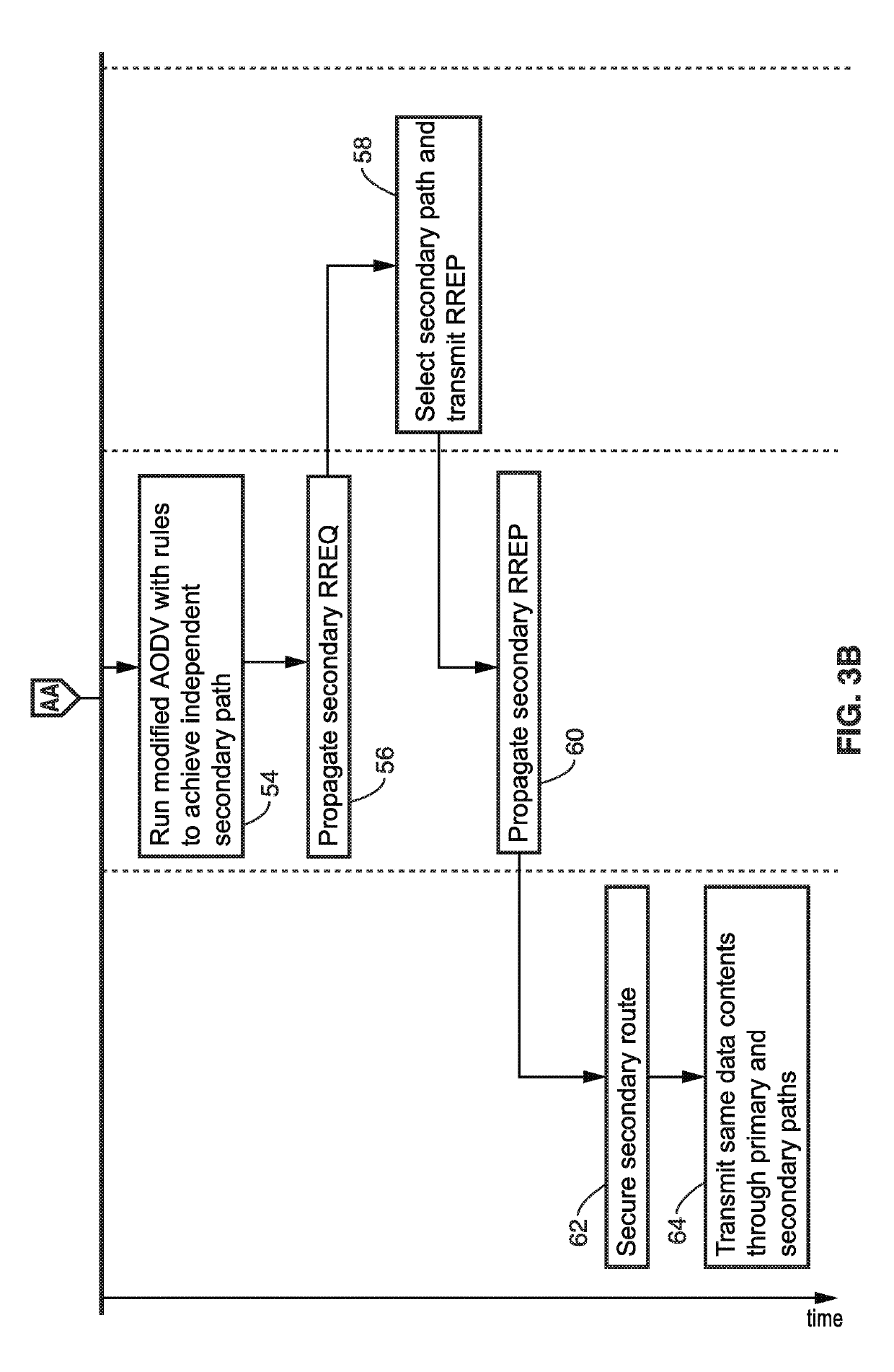Routes discovery in wireless networks with directional transmissions
a wireless network and directional transmission technology, applied in the field of routing path discovery in adhoc or mesh networks, can solve the problems of not providing for rapid route discovery or use of multiple routing paths
- Summary
- Abstract
- Description
- Claims
- Application Information
AI Technical Summary
Benefits of technology
Problems solved by technology
Method used
Image
Examples
embodiment 70
[0054]FIG. 4A and FIG. 4B illustrates an embodiment 70 of a messaging flow-timeline showing an overview of pseudo-simultaneous (non-sequential) routing according to the present disclosure so that the primary and secondary routes are obtained in a one-shot process. It should be appreciated that this one-shot process involves obtaining the routes non-sequentially, wherein one does not wait for discovering the first route, before attempting to discover a second route. This process is referred to herein as being pseudo-simultaneous, in that although the RREQ for the primary and second routes are not sent at the exact same time, they are sent without regard to awaiting for a response from other stations.
[0055]It will be seen from the figure that three types of stations are involved in the process, a source STA 72, intermediate STAs 74, and a destination STA 76. The process basically follows two phases; a proactive phase 82 and a reactive phase 80 (timer-based). In proactive phase 82 all ...
embodiment 250
[0091]FIG. 11 illustrates an embodiment 250 for identifying routing paths to a destination STA, as was previously encapsulated in block 218 of FIG. 10A, and is now shown in an expanded format.
[0092]The process commences 252 and retrieves 254 the NL data base of N STAs. A loop counter is initialized 256, and in the body of the loop, a loop count is checked 258, to determine if the N STAs are still being checked. If not, that is to say looping is complete and all STAs have been checked, then block 260 is executed to save the list of multiple hop relays, and to end this process 262. Otherwise, the next of the N STAs is checked by looking up (querying, searching, comparing) 264 the neighboring STAs of STA “n”. A check is then made if neighbor STA of STA “n” matches the destination STA. If there is not a match, then the counter n is advanced 270 to refer to the next STA, and execution moves back to the top of the loop at block 258. Otherwise, if a match is found in block 266, then STA “n...
embodiment 290
[0093]FIG. 12 illustrates an embodiment 290 for ranking routing paths to a destination STA, as was previously encapsulated in block 232 of FIG. 10B, and is now shown here in an expanded format.
[0094]The process commences 292 and retrieves 294 a list of the “M” multiple hop relays to a destination STA. A loop counter m for the M hop relays is initialized 296, and the loop commences 298 with checking if the loop is still in progress. If looping is not still in progress, thus it is complete having already executed through all M multiple hop relays, then block 300 is executed to save the list of ranked multiple hop paths to the destination, and then paths are designated 302, such as with the highest ranked path designated as the primary path, and the second highest ranked path being designated as the secondary path, to end 304 the process.
[0095]Otherwise, the next loop iteration from block 298 retrieves link quality information 306 associated with STA M, and stores this information 308 ...
PUM
 Login to view more
Login to view more Abstract
Description
Claims
Application Information
 Login to view more
Login to view more - R&D Engineer
- R&D Manager
- IP Professional
- Industry Leading Data Capabilities
- Powerful AI technology
- Patent DNA Extraction
Browse by: Latest US Patents, China's latest patents, Technical Efficacy Thesaurus, Application Domain, Technology Topic.
© 2024 PatSnap. All rights reserved.Legal|Privacy policy|Modern Slavery Act Transparency Statement|Sitemap



